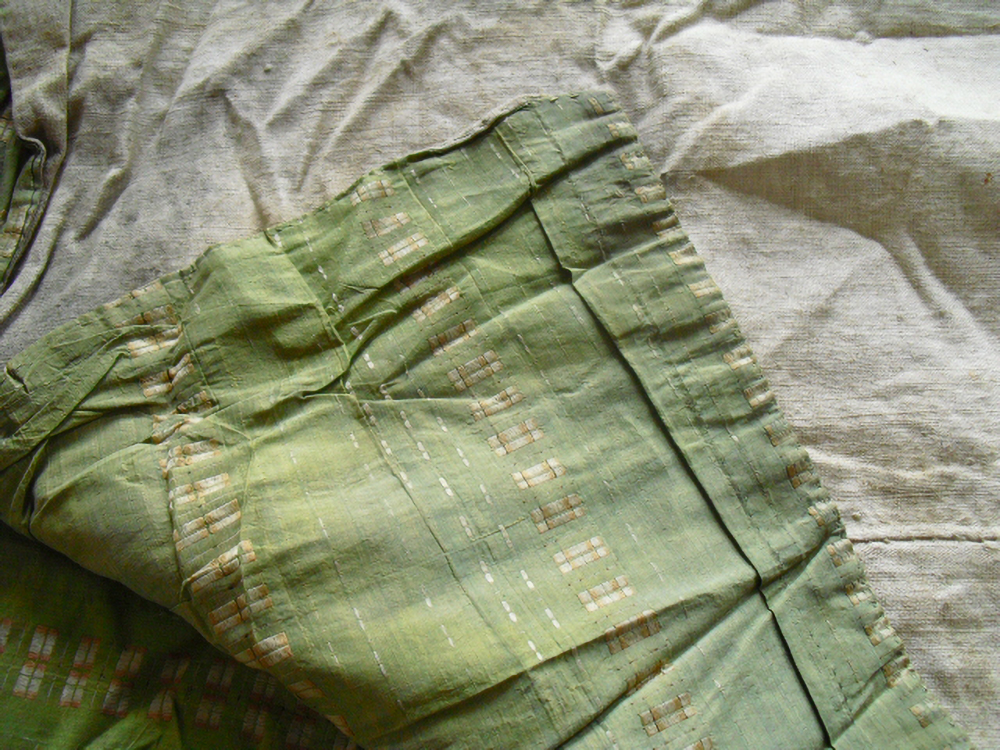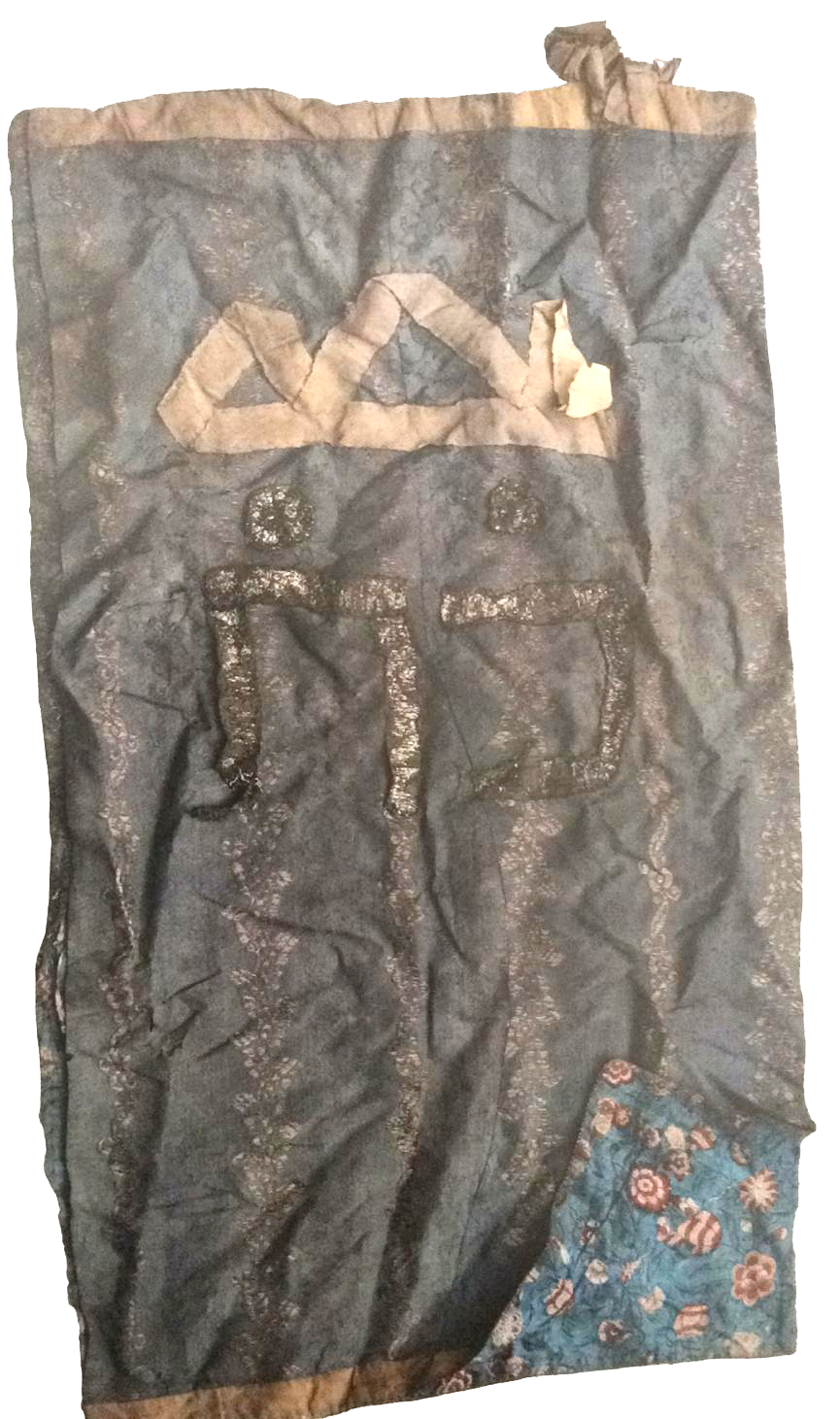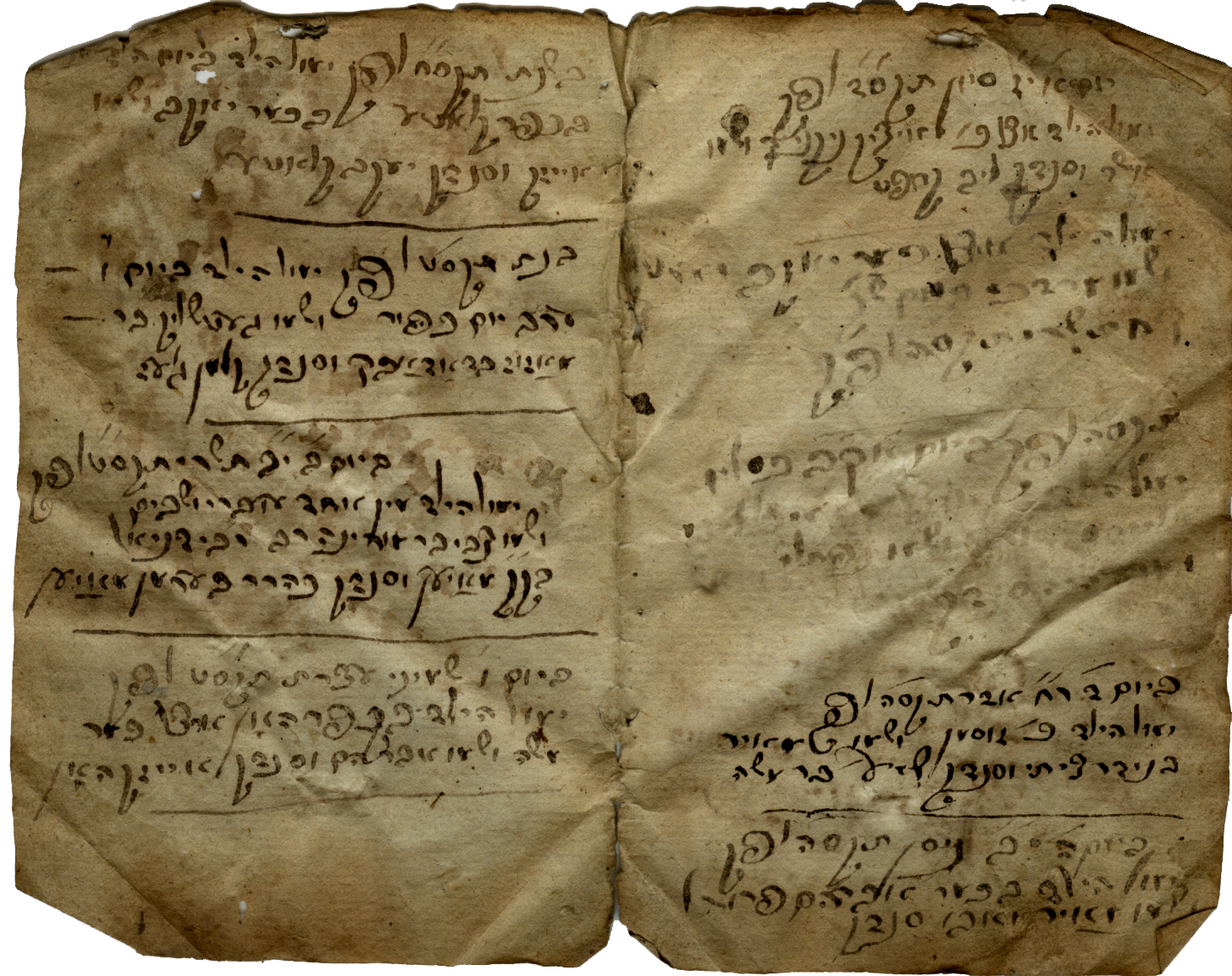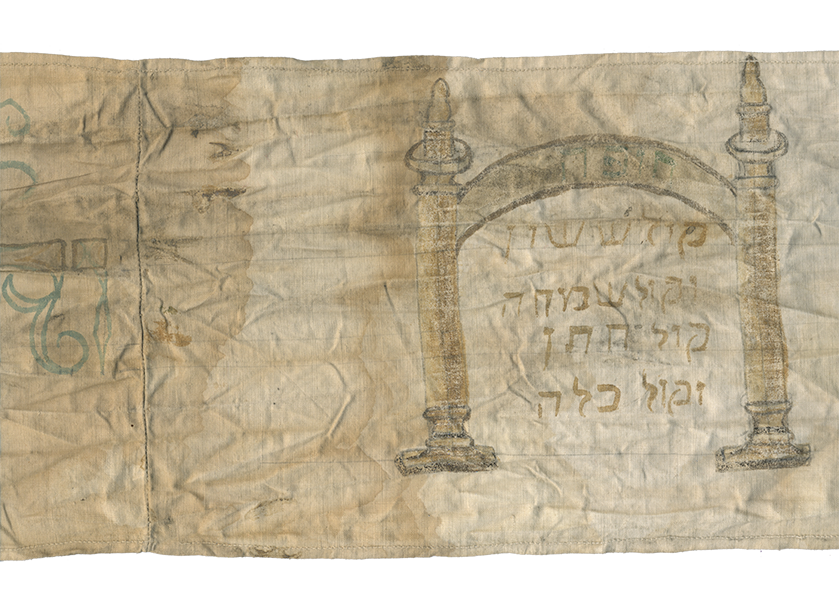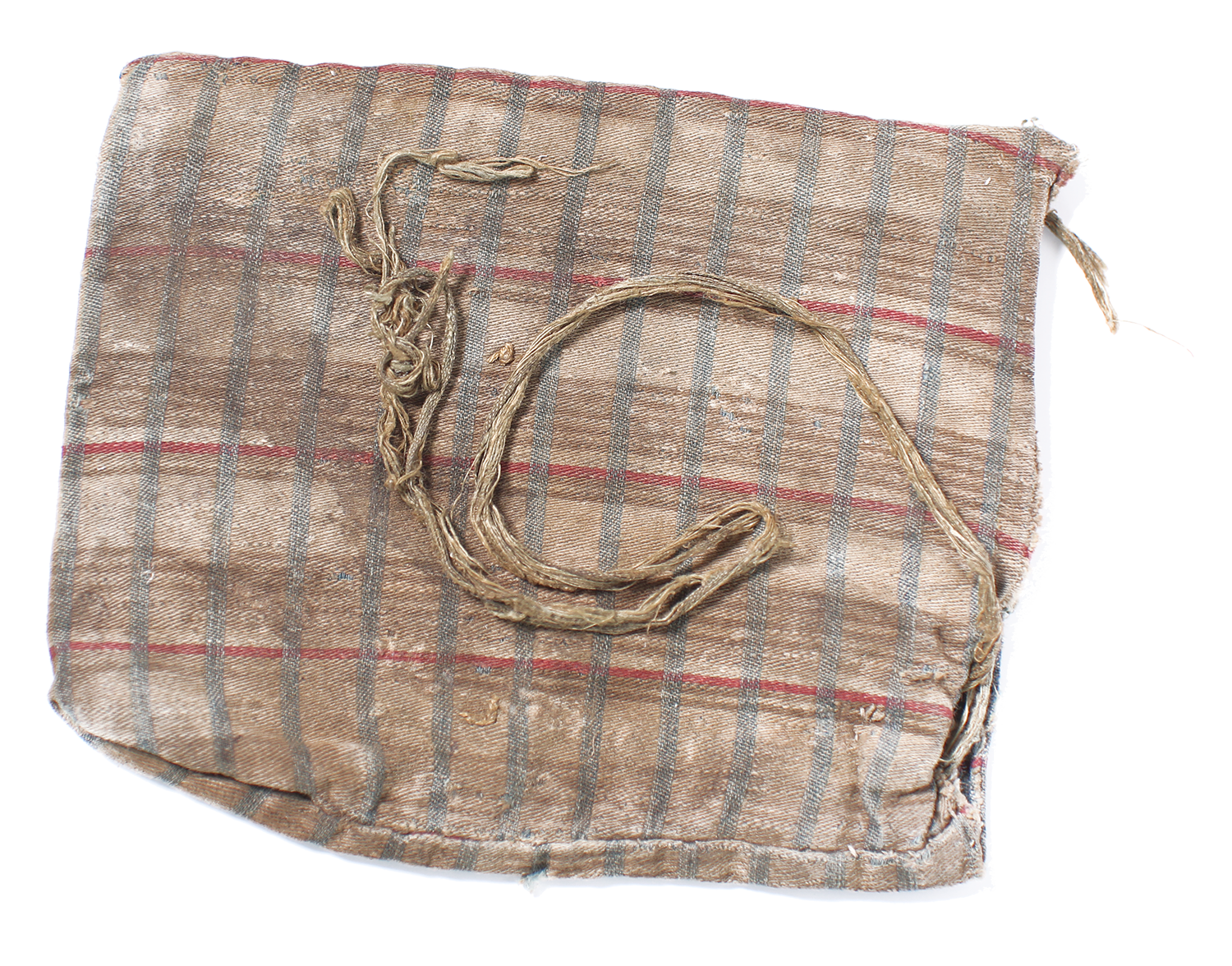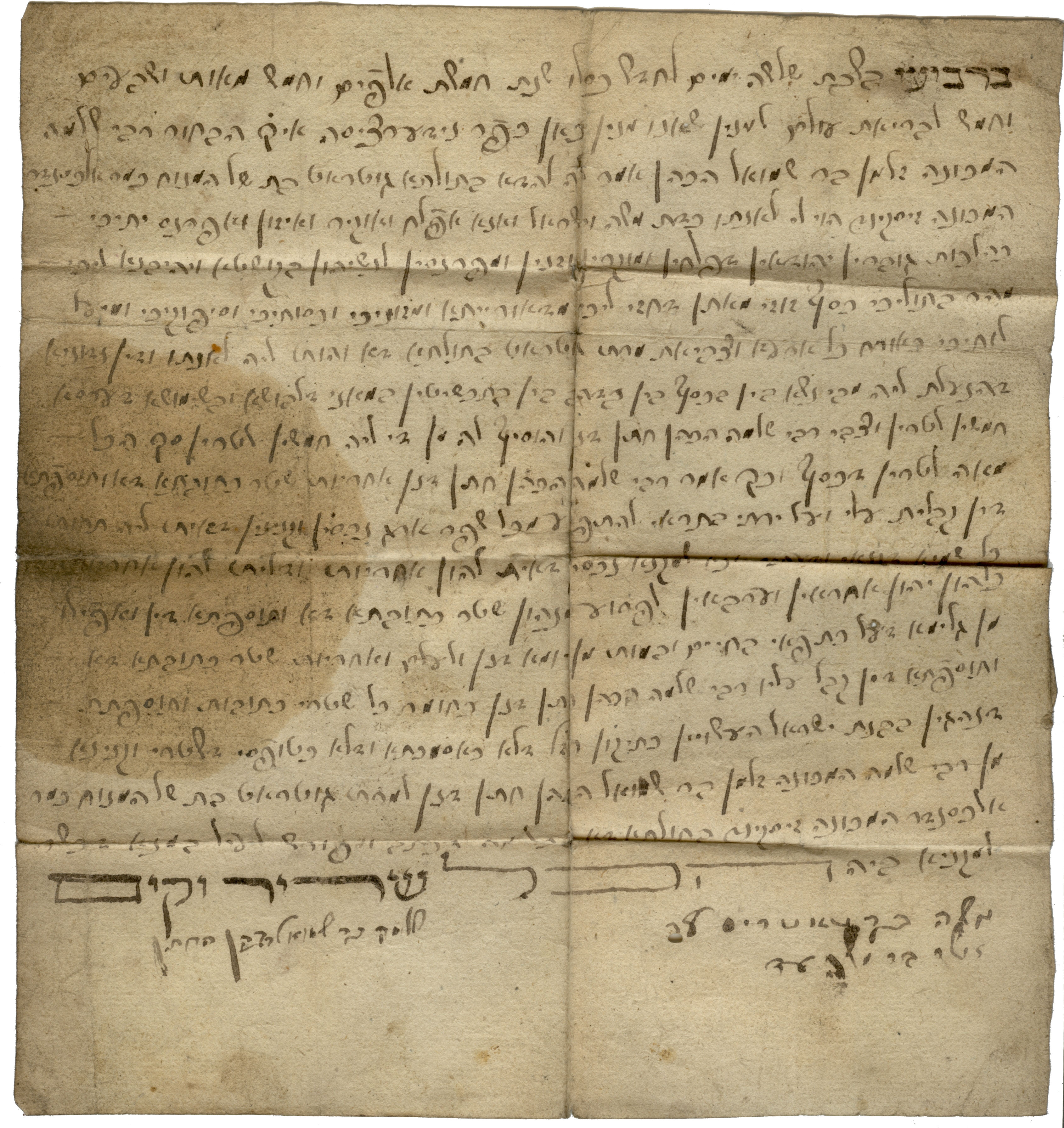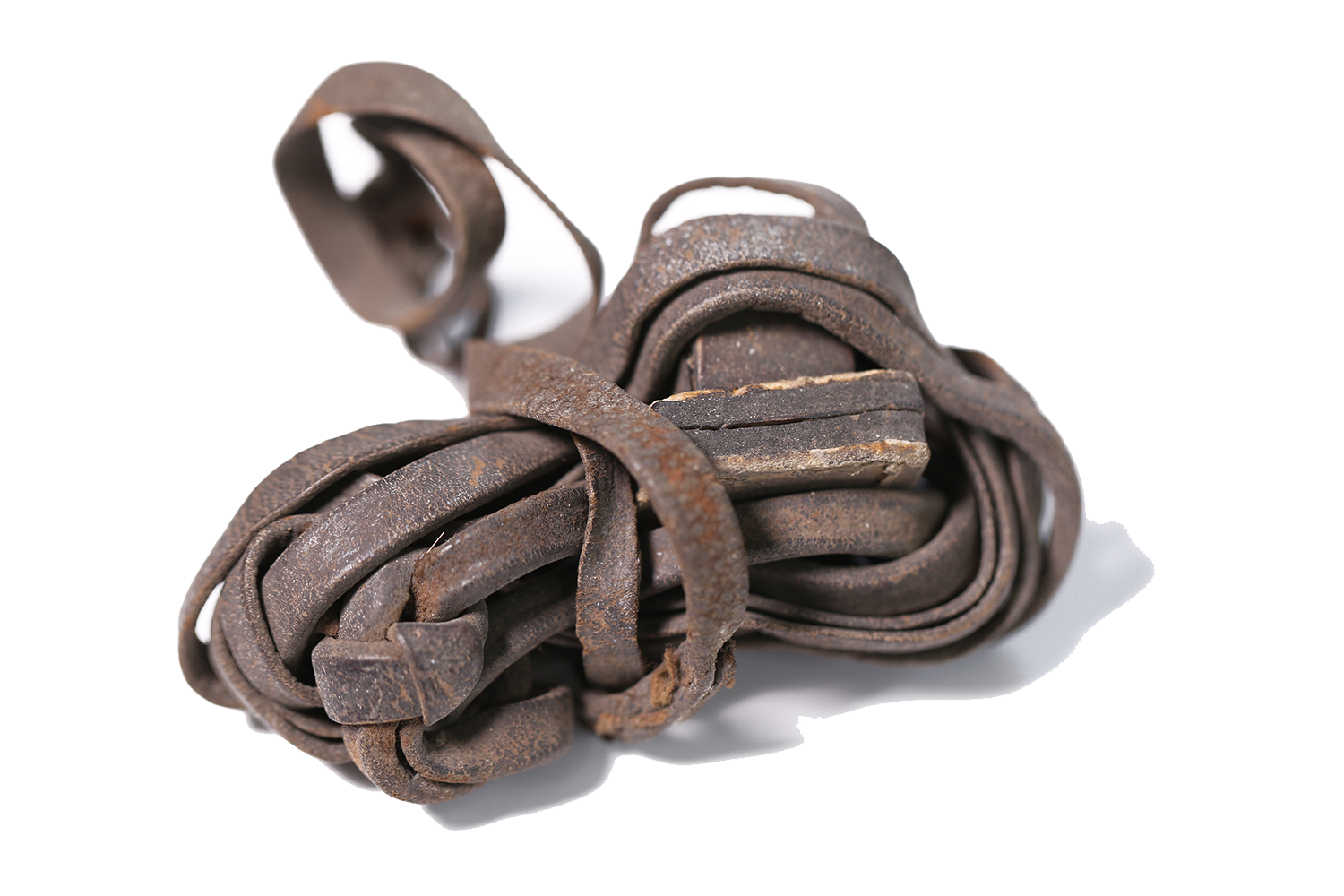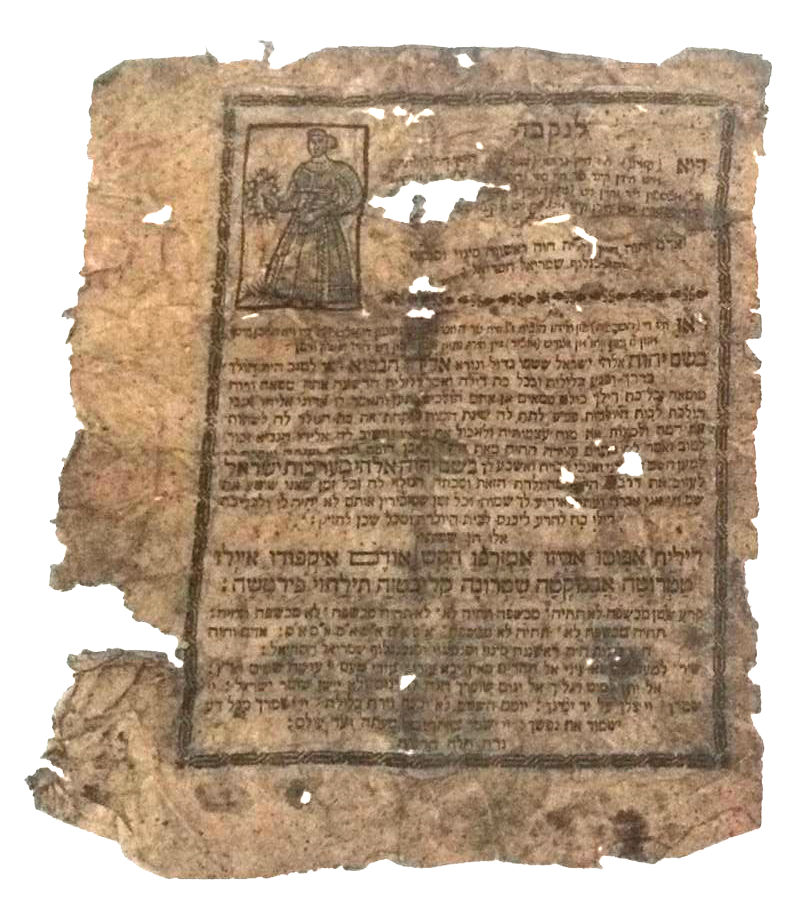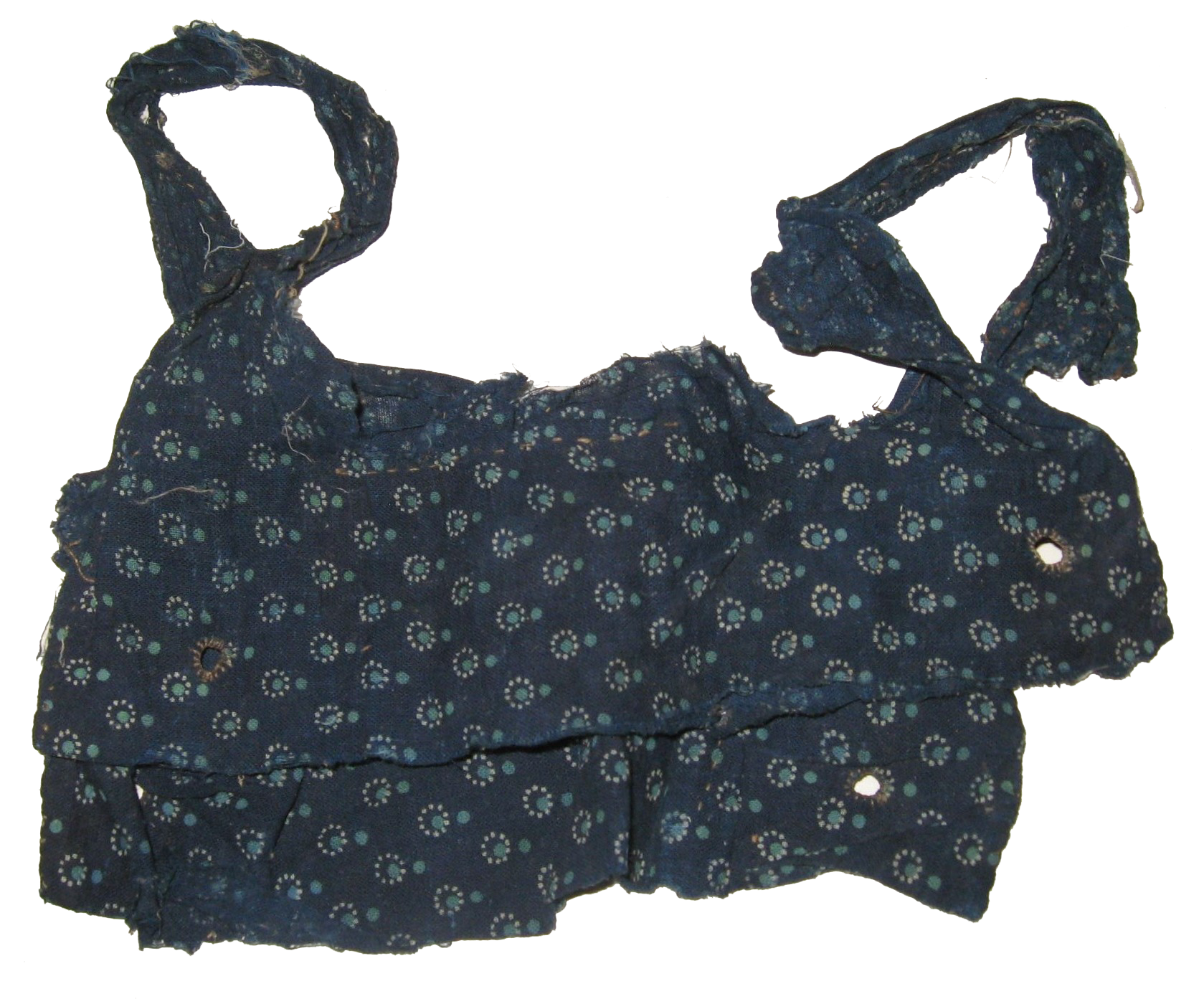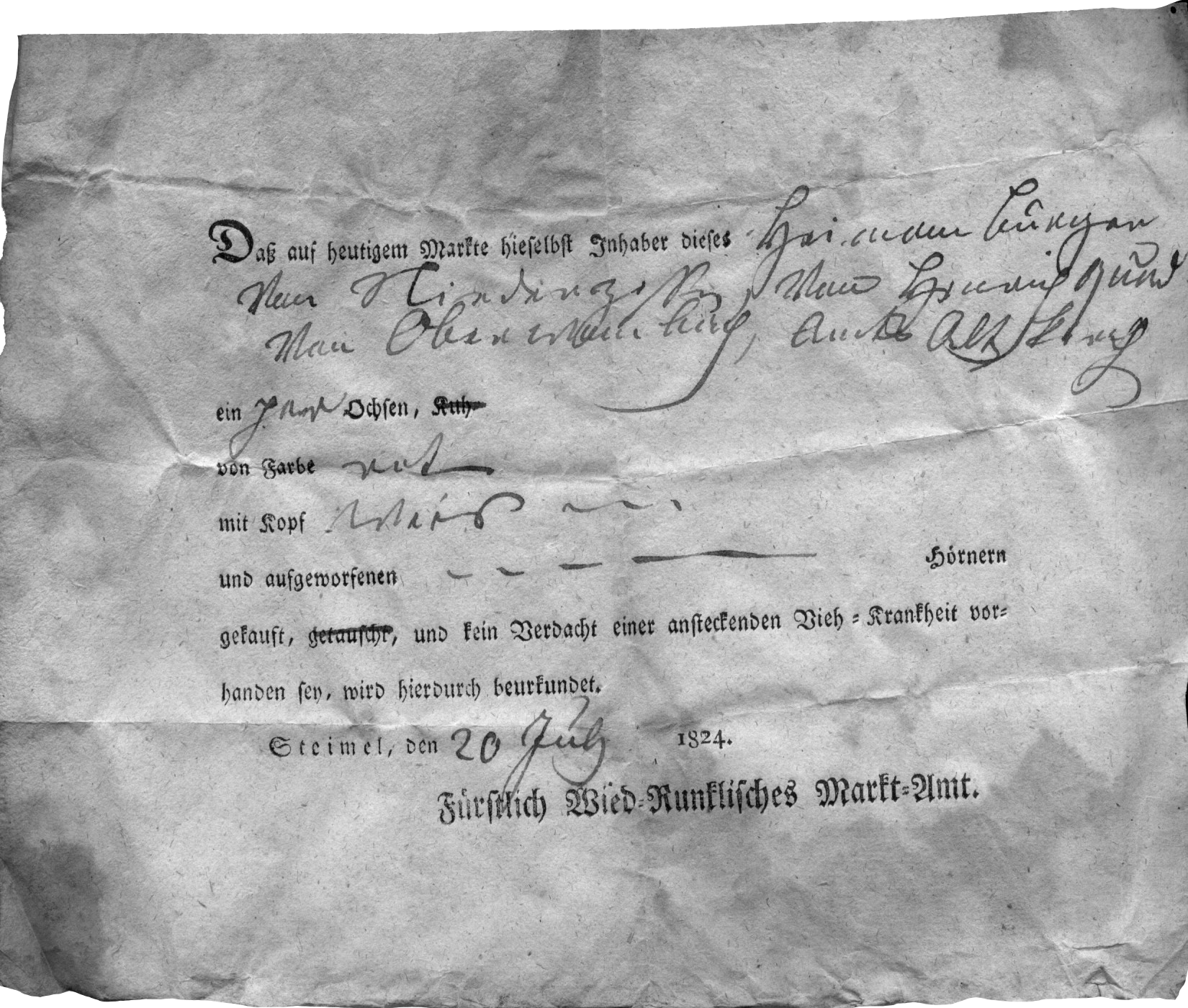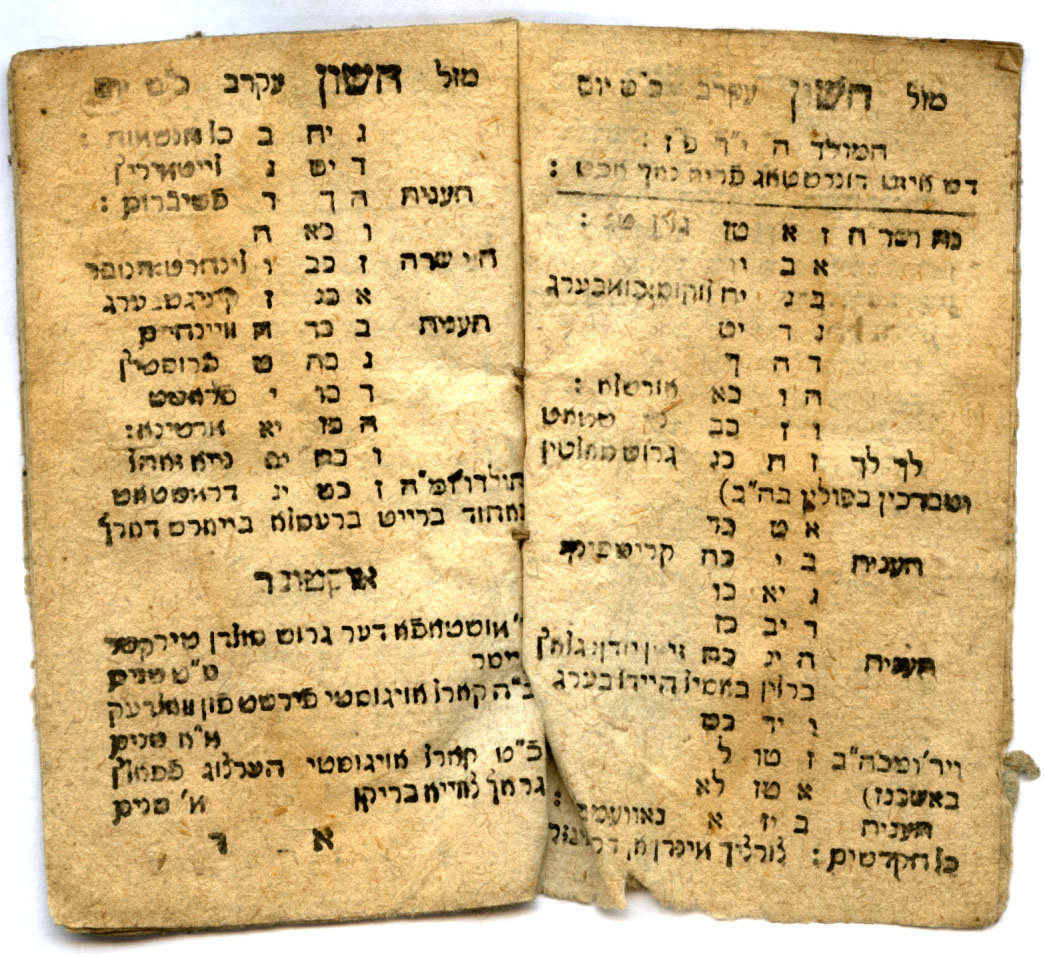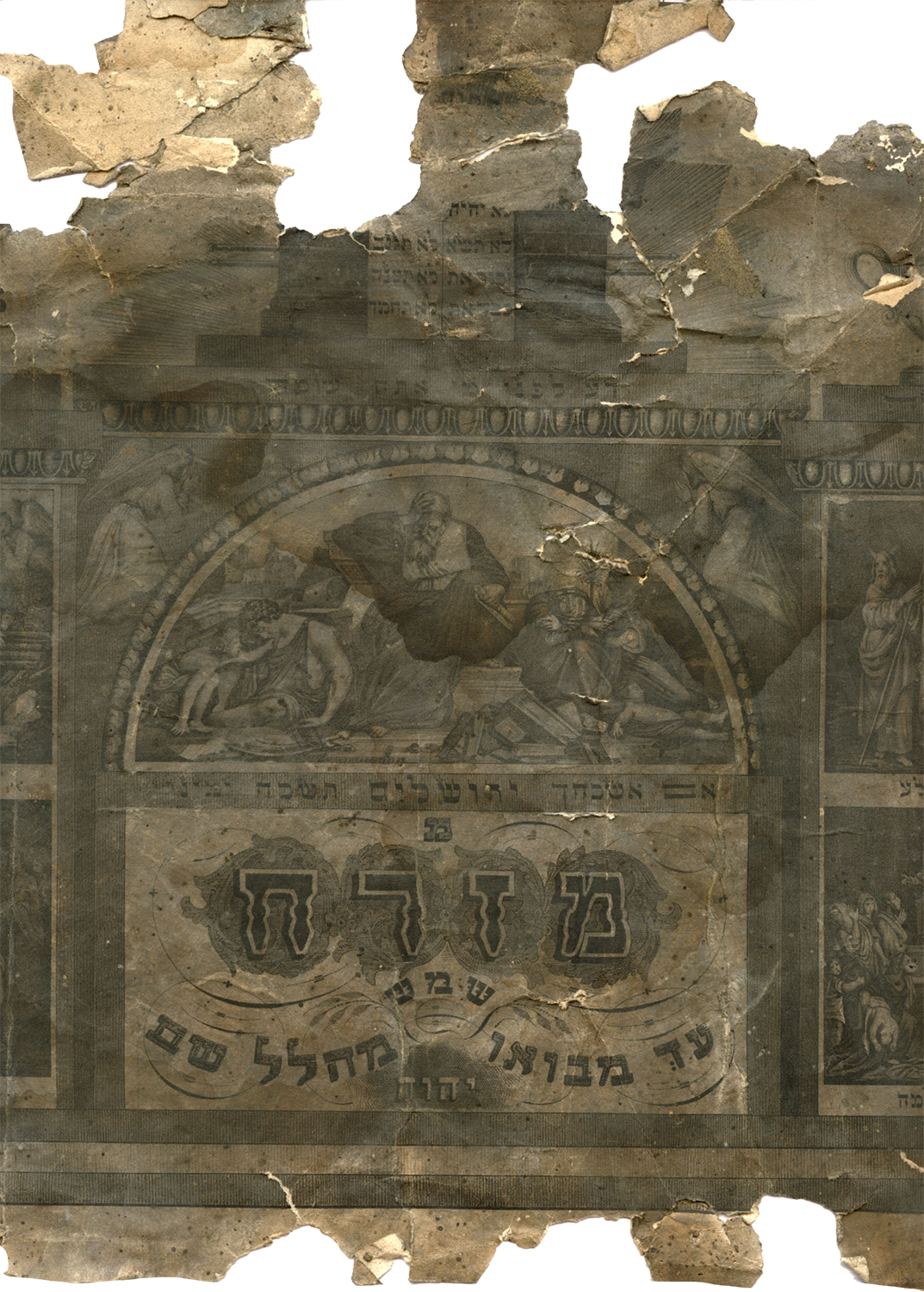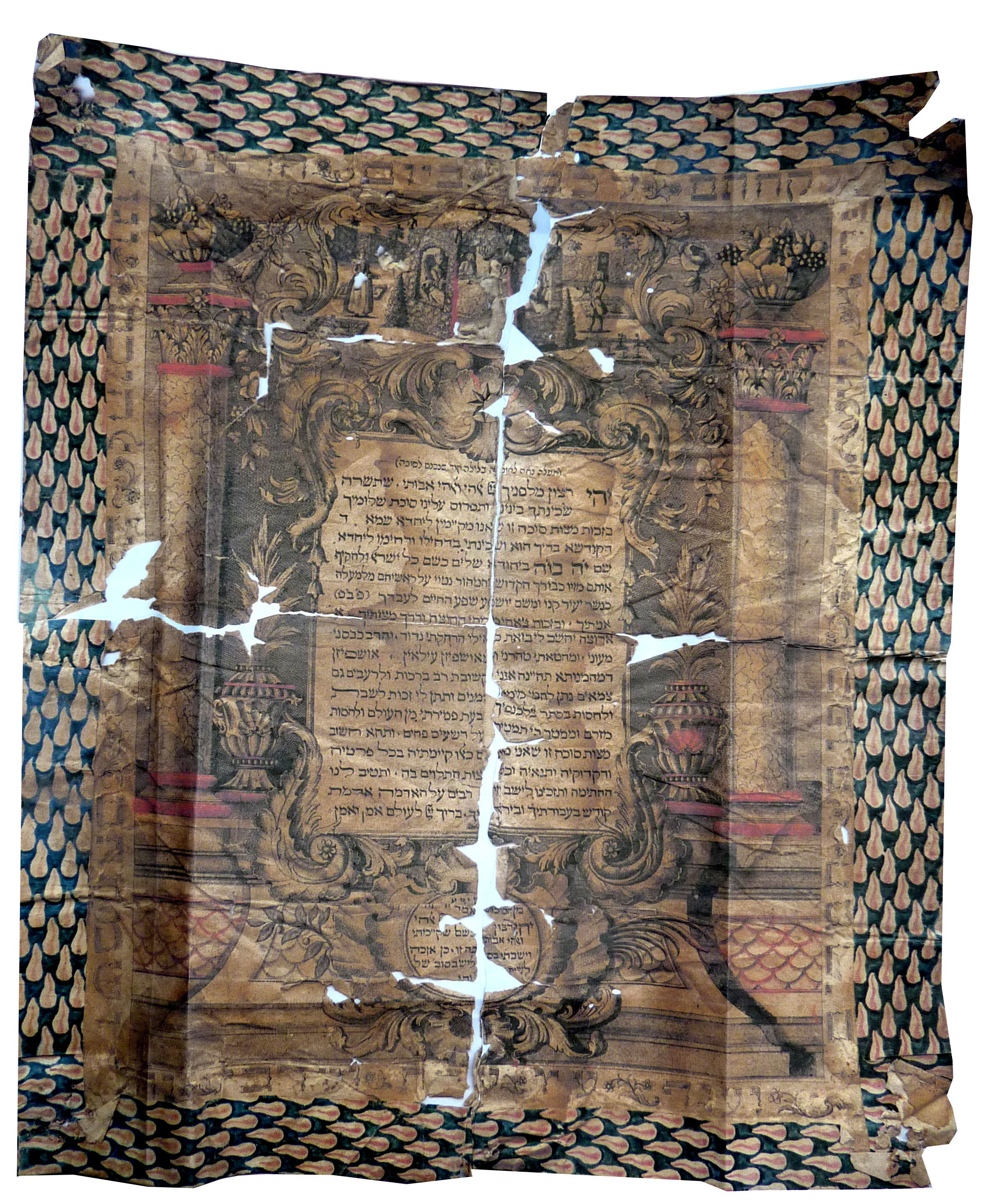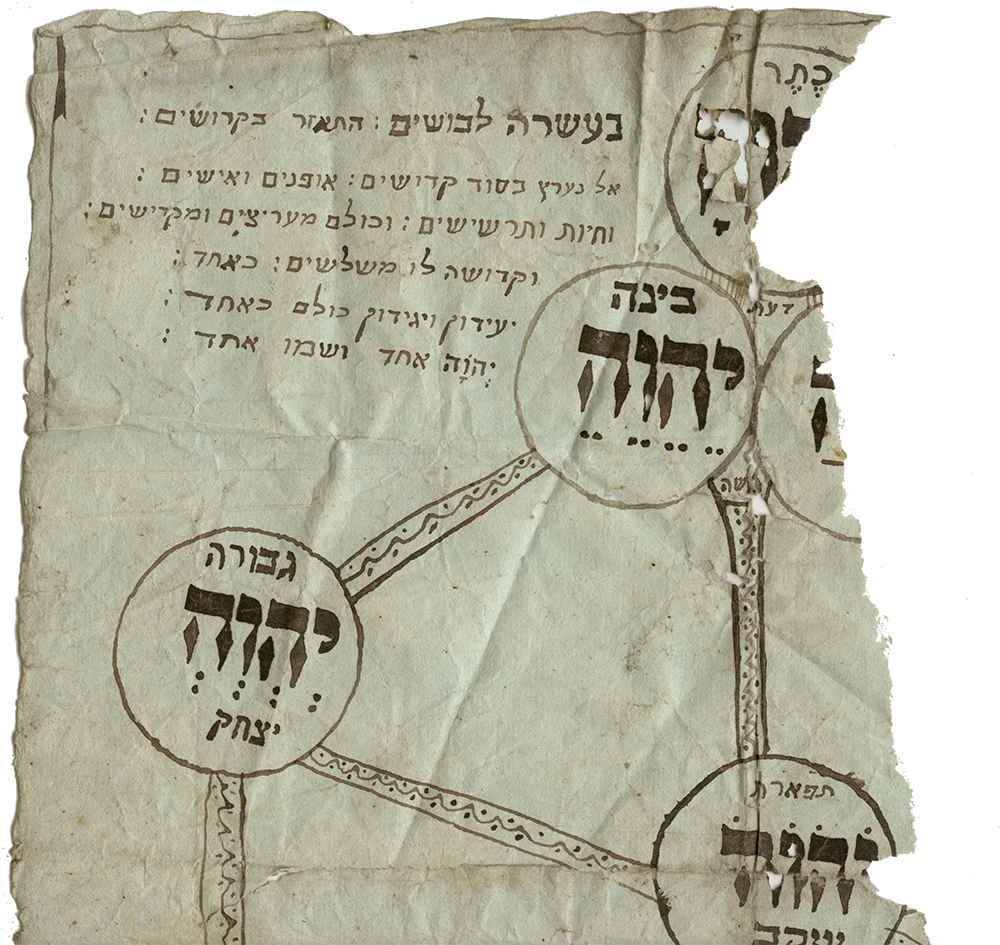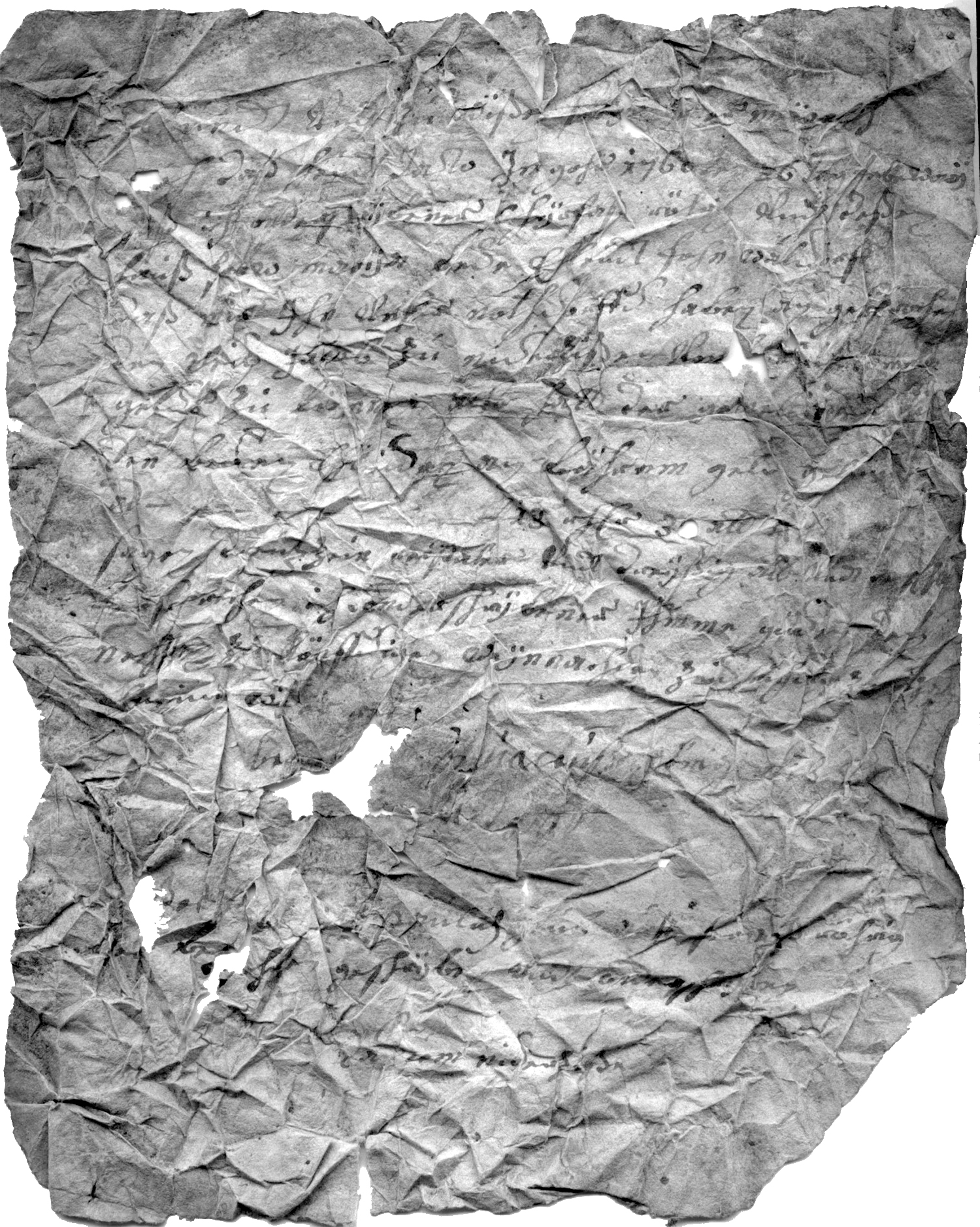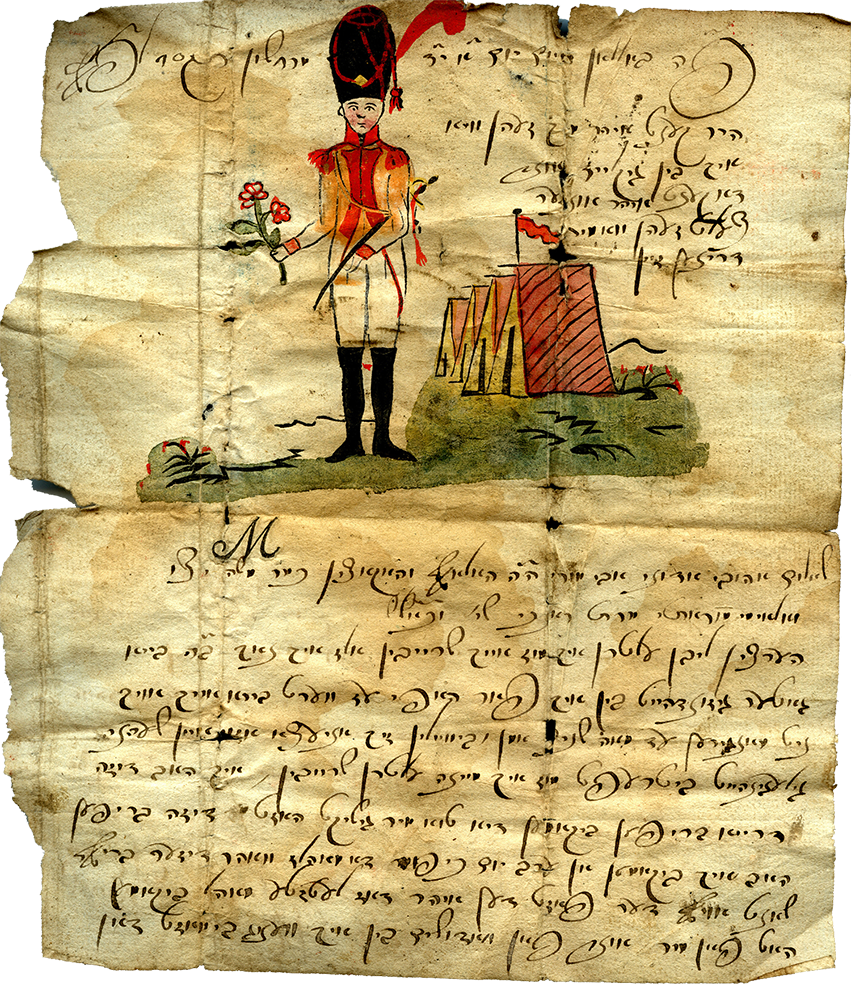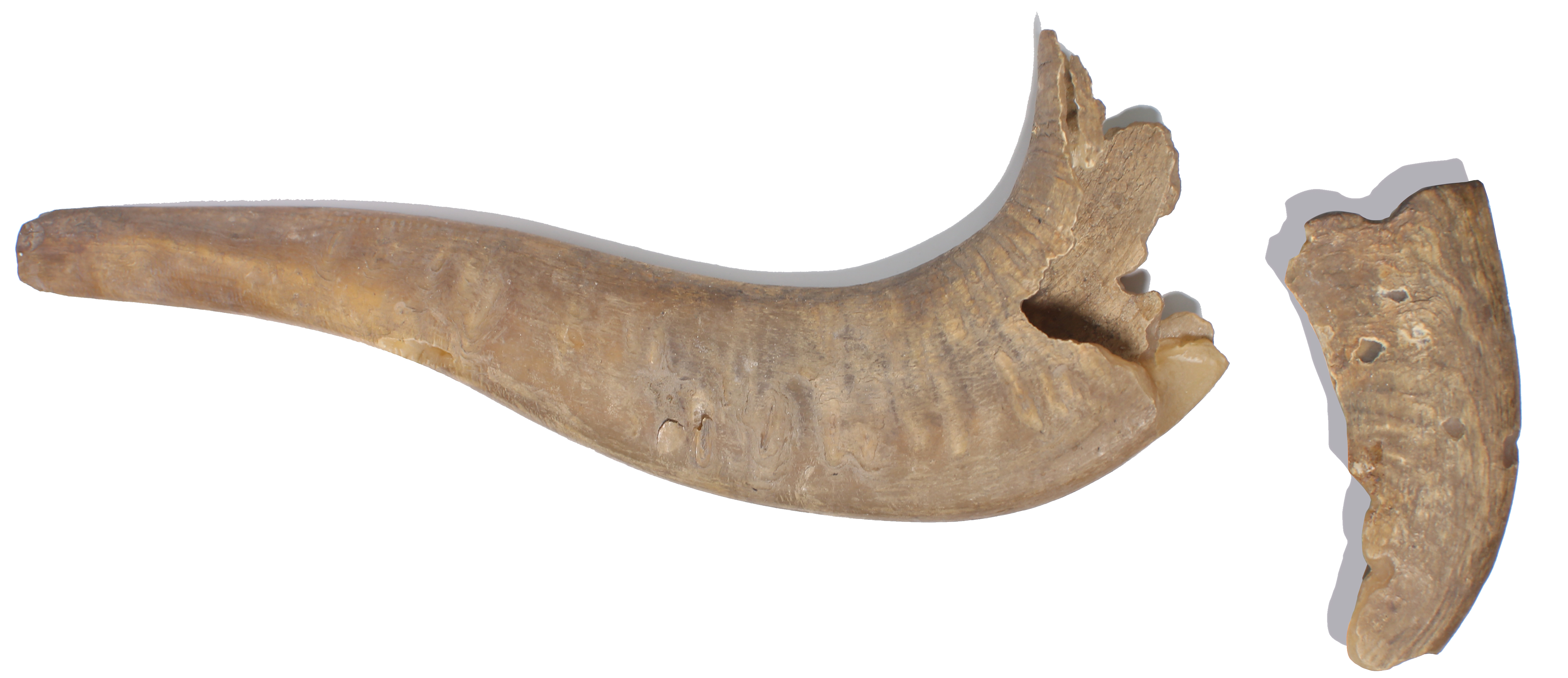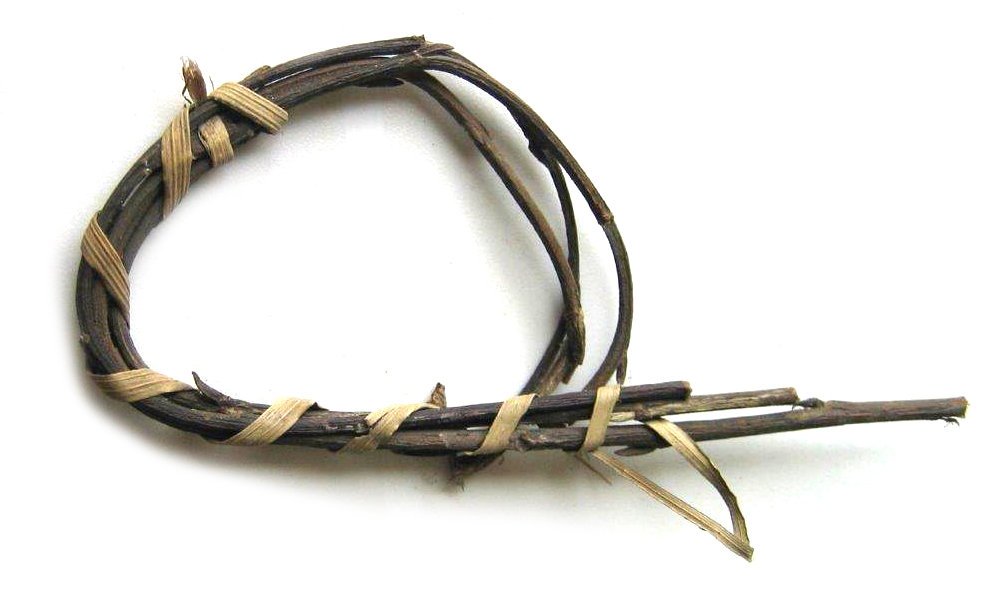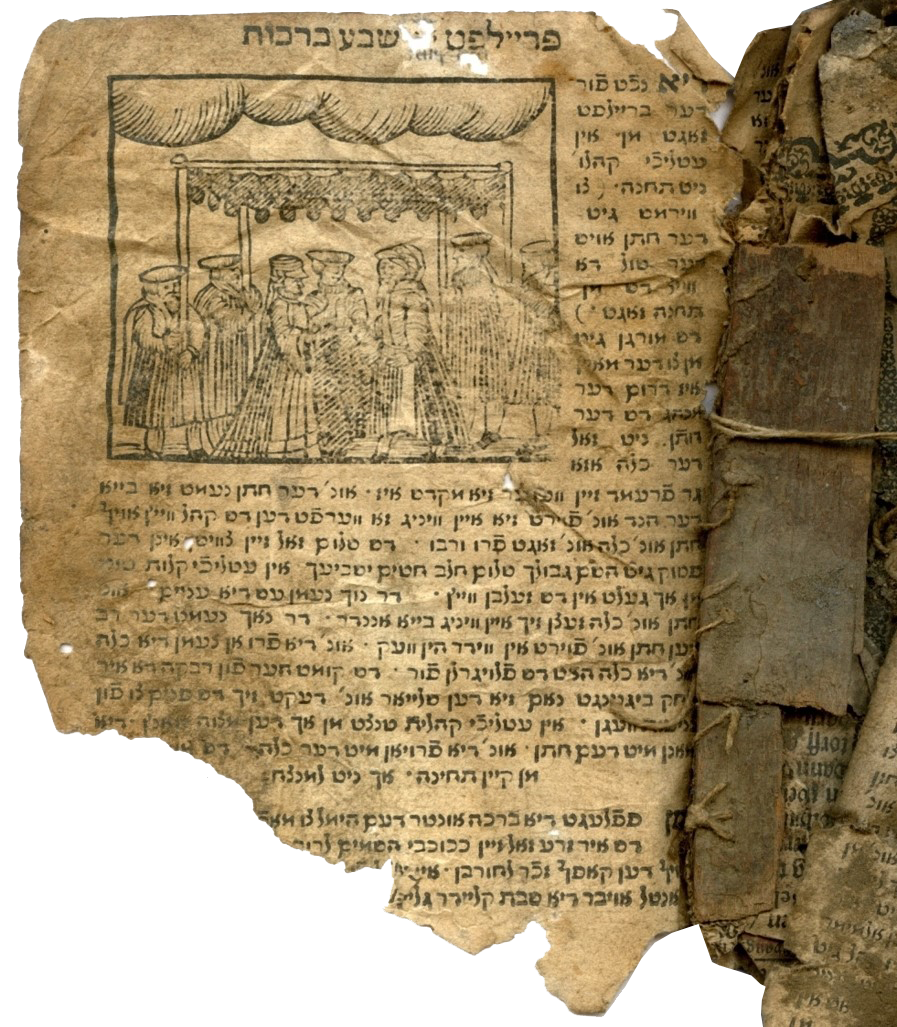The Display Storage
During the renovations of the former Synagogue of Niederzissen, a plethora of discarded, unusable ritual and everyday items were recovered in the attic, including various fragments of prayer books, business records, Tefillin and textiles. Such a find is called a Genizah (Hebrew for warehouse, storage) by experts.
In this “Display Storage”, we attempt to provide a small glimpse into the extensive collection of Genizah-discoveries from Niederzissen. We present 20 outstanding objects and describe them in detail.
Bimah Cover / Lectern Cover
The Bimah is an elevated platform within a synagogue, traditionally placed in the center of the room. It symbolizes the altar of the Holy Temple. Prayers are led from the Bimah and the Torah is placed on it to be read. To honor the Torah – the Sacred Scripture – the Bimah is permanently covered with an ornate cover on which the scrolls are placed.
View Object
Torah Mantle (Covers)
To safely store Torah scrolls, they are carefully packed away. This is done using a Torah Mantle (or Cover), which is placed over the body of the scrolls whilst leaving two holes for the rollers on which the Torah is rolled. This Me’il is usually made from precious cloth and decorated with embroidery. Some of the most common decorations include crowns for the kingdom of God, Hebrew inscriptions, and pairs of lions (lions being the symbol of the Tribe of Judah, from which the word Jew is derived).
View Object
Mohel-Book
In a Mohel-book, the “circumciser” (the Mohel) records all circumcisions (Brit Milah) performed by him. Since 1798, all Jewish citizens of Niederzissen were recorded by the registry office. Before that date, Jews had to pay a fee to register their births, marriages, and deaths in Christian parish records.
View Object
Torah Binder („Wimpel“/Mappa)
Jewish girls are accepted into the community after four weeks by naming in the synagogue, Jewish boys on their eighth day by circumcision. Until the 20thcentury, it is customary to clean the cloth used during circumcision to swaddle the infant, cut it into pieces and sew it into a sash.
View Object
Tefilin Bag
Along with the Tallit, orthodox Jewish men and liberal Jewish women put on a “prayer strap” (Tefillin) during their morning prayers. These are traditionally kept in bags made specifically for that purpose.
View Object
Marriage Contracts (Ketubot)
A marriage contract (Ketubah) is traditionally written in Aramaic. In Orthodox Judaism, it provides safeguards for the woman. In it, the husband guarantees nourishment, a healthy life and happiness to his wife. The Ketubah also arranges for the financial security of the wife in case of her husband’s death or divorce. In modern Jewish trends, a Ketubah is used to provide assurances for both partners – as well as a space for expressions of mutual love.
View Object
Prayer Straps (Tefillin)
Prayer straps (Tefillin) are put on by Orthodox male Jews (and women, in more liberal congregations) during morning prayers. Tefillin consist of a pair of leather straps, which are put on following exact specifications – one around the arm, the other on the forehead.
View Object
Amulet (for childbed)
Amulets are texts on parchment which are attributed with healing and protective powers. They are supposed to bring good luck and protect from evil in general, and particularly protect the newborn and heal the sick and the infertile. They were commonly placed above the bed. Despite the Torah prohibiting the use of magic, amulets were very common in Jewish folk belief up until the 20thcentury. Popular Jewish belief blamed the demoness Lilith for high infant mortality and hoped the amulets would protect both the infant and the mother. The protective text invokes the prophet Elias to help and quotes psalm 121.
View Object
Small Tallit (Tallit katan)
Some Orthodox Jews wear a small Tallit (Tallit Katan) beneath their everyday clothes. A Tallit Katan differs from a conventional Tallit insofar that it is worn the entire day and not only for specific prayers.
View Object
Cattle Sale Contract
Since Jews were prohibited from entering any professions organized by guilds or take any government posts far into the 19thcentury, many of them were active in commerce. Among the Jews of Niederzissen, cattle trade was widespread until the rise of the Nazi regime. While trades were initially done by handwritten sales contracts, the modern Prussian system enforced the use of standardized blank forms for the same purpose from the beginning of the 19thcentury onward.
View Object
Pocket Calendar, 1784/85
Jewish religious life follows its own calendar, with fixed dates for holidays and memorials. The months and their names differ from those of the Gregorian calendar which is commonly used worldwide.
View Object
Mizrah Sheet
In European synagogues and prayer rooms, prayers are traditionally directed eastwards, facing Jerusalem – where the Holy Temple stood until 70 CE. Because of this, the Torah ark is placed on the eastern wall in all Jewish places of worship. If some members of the congregation or an entire group are in a room without a Torah ark, the direction facing east is indicated using a so-called Mizrah sheet or tablet (Mizrah being Hebrew for “east”). The tradition is derived from Dan. 6:11. Artistically crafted Mizrah sheets can be found since the Middle Ages.
View Object
Decorative Sheet for Sukkot
The eight-day holiday Sukkot is both a harvest thanksgiving festival and a reminder off the precarious dwellings of the Israelites during their wanderings through the desert after their Exodus from Egypt. As a reminder of them living in provisional booths, Jews all over the world erect Sukkah (temporary huts made from a variety of materials) in which they, weather permitting, eat their meals and spend time. Traditionally, the interior of these Sukkah is decorated with pictures and garlands, as well as with the seven species for which Israel is praised (schiw’at haminim) – wheat, barley, grapes, figs, pomegranates, oil (olives) and honey (dates).
View Object
World Tree (Sefirotic Tree)
Kabbalah is the best-known tradition in Jewish mysticism and is based on centuries of oral and written tradition. Its origins lie in the Holy Scriptures of Judaism (the Tanakh). Kabbalah deals with fundamental issues of human existence: Why do we exist, where do we come from and where do we go after our earthly existence comes to an end. It considers itself a method by which humans can achieve a higher consciousness and spirituality.
View Object
Loan Agreement 1760
From medieval times until the 19thcentury, Jews were barred from entering craft guilds or holding public office. They could also neither buy farmland nor work as farmers. Because of this, they were limited to working as traders and money lenders. Long before the establishment of rural loan societies, Jewish money lenders therefore assumed the important function of creditors to the rural populace.
View Object
The Soldier’s Letter – Letter from the Jewish Soldier Schmuel Doderer
The area of the Niederzissen congregation came under French rule after the Coalition Wars of 1794, guaranteeing equal rights to all Jews living there. This included being eligible for military service. A letter to his parents from 1807 shows that amongst those serving in the French army was Schmuel Doderer from Niederzissen. Schmuel was stationed at Boulogne-sur-Mer, then moved with his regiment all the way to Spain, where he probably died in a military hospital in late 1808. We can infer from the letter – with its Hebrew writing, Jewish date, and a mention of Yom Kippur – that Schmuel was rooted in Judaism. The letter is remarkable in its artful design, decorated with colored ink, showing a soldier carrying a saber and flowers and standing next to a military camp. The drawing of a soldier expresses Schmuel‘s pride of being allowed to serve in the French army as a Jew.
View Object
Mezuzah (Doorpost Blessing)
A Mezuzah is a small case (which can be decorated) containing a parchment with the handwritten Jewish creed (Shema Yisrael). It is placed tilted upwards, in the upper third of a righthand doorpost (looking inward). This rite traces back to verses from Deuteronomy 6:9 and 11:20, which state “and thou shalt write them upon the door-posts of thy house, and upon thy gates.” On the back of the parchment, the word “Shaddaj” is also commonly written, a Hebrew abbreviation for “Guardian of Israel’s doors” – meaning God. Mezuzot are found on all entryways into living spaces and rooms in which dining is permitted.
View Object
Schofar
The Shofar horn is an ancient musical wind instrument widely used during antiquity in the Middle East. It symbolizes the planned sacrifice of Isaac, in whose place a ram was eventually offered. Its horns are a reminder to God of the vicarious atonement of Israel (Genesis 22). For this reason, the Shofar is sounded in synagogues even today on the high holidays Rosh Hashana and Yom Kippur – New Years and the Day of Atonement – which center around the confession of sins and the reversion back to God. The Shofar, made from a rams horn, is the only instrument of antiquity that is still regularly used today.
View Object
Lulav Ring
The eight-day holiday Sukkot is both a harvest thanksgiving festival and a reminder off the precarious dwellings of the Israelites during their wanderings through the desert after their Exodus from Egypt. As a reminder of them living in provisional booths, Jews all over the world erect Sukkah (temporary huts made from a variety of materials) in which they, weather permitting, eat their meals and spend time.
View Object
Fragment of a Book
From the Middle Ages until the 19thcentury, bible translations and rabbinical narrations were published in Yiddish specifically for women. Since Jewish women were not called up to read from the Torah in the Synagogue, reading of biblical texts in Yiddish was sufficient, while the sacred Hebrew language remained reserved for the men’s study of the bible. The devotional literature aimed at women also included illustrated books on Jewish customs.
View Object

